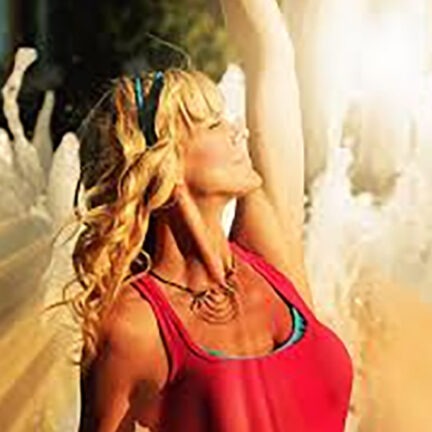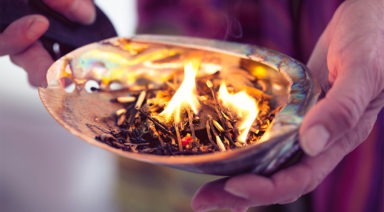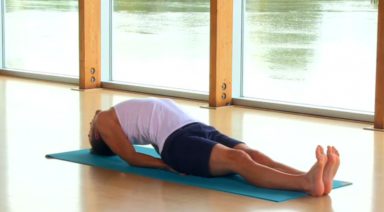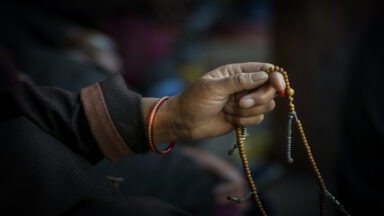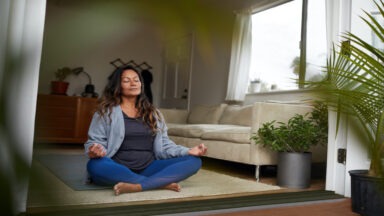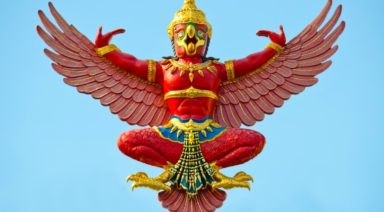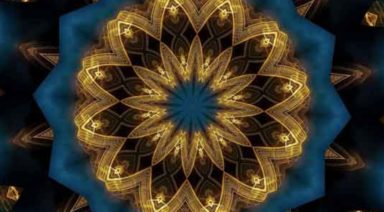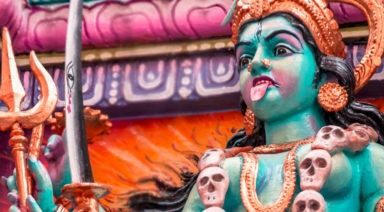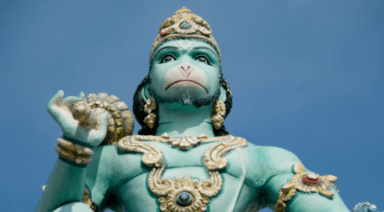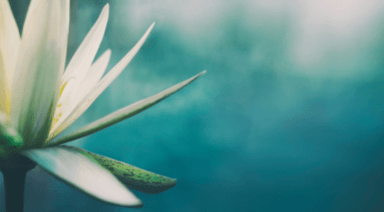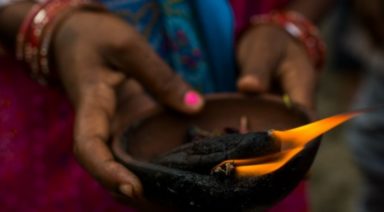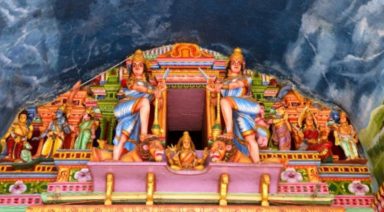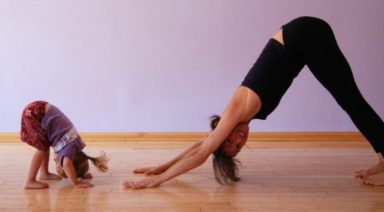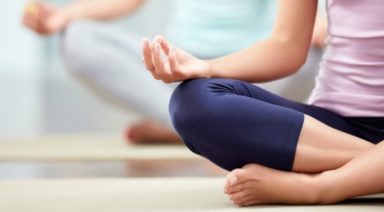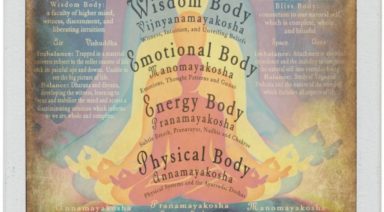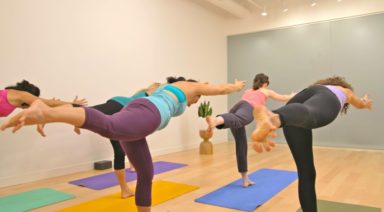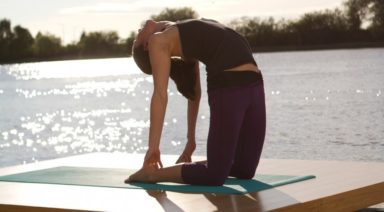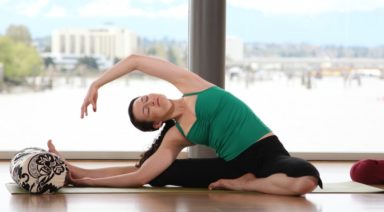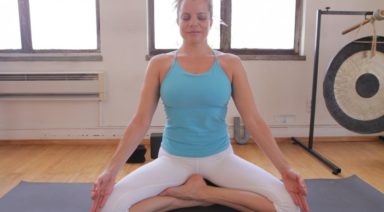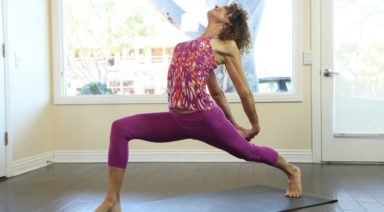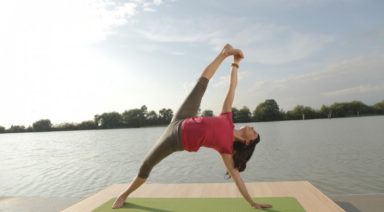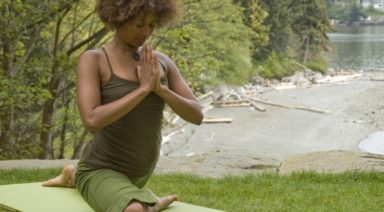Sun Signs Yoga for the Zodiac
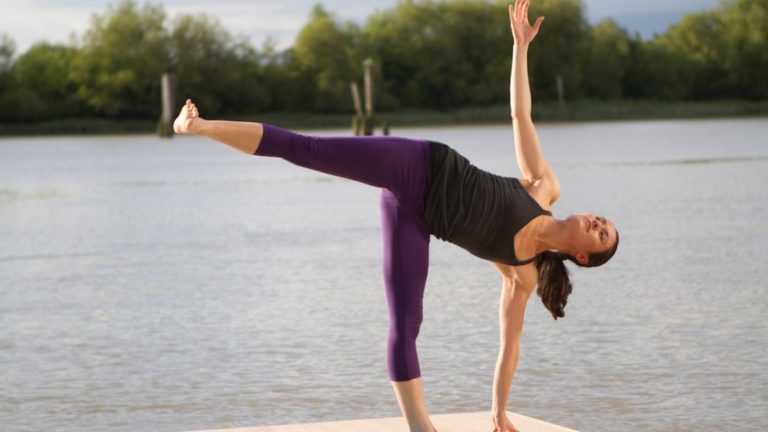
Astrology is a wonderful system that can be paired perfectly with your yoga practice. It’s safe to assume that most of us know what our astrological sun sign is, for example, I’m a Scorpio and my son is a Taurus. Each astrological sign represents a part of the body and organs; therefore we can create a yoga practice that focuses on the corresponding body parts and functions that best signifies your astrological sun sign.
The yoga we are most familiar with, the practicing of physical poses or asana, is often called Hatha Yoga. Ha=Sun and Tha=moon. In our yoga practice the sun energy is considered Yang, or energy out. You may hear the phrase, “Shine your Light”, this is indicative of the radiant sun energy pouring out from our heart center. We are taught to look up for most of our asana practice and that is also “sun energy”, which is great.
In astrology we have the Zodiac, which is made up of twelve different sun signs, and your date of birth determines which one you are. Each sign has unique traits lending to our personalities, character traits, motivations, and inclinations. And while there is much more that makes up your full astrological chart, the sun sign is the best place to start as it describes your basic nature and the personality traits that remain consistent through the ups and downs of life. In both yoga and astrology, the sun represents the ego, the self.
With the attention drawn towards your physical body, your astrological sun sign will govern over certain organs and body parts as well as dictate certain emotional patterns and psychological tendencies. We then seek to find the corresponding yoga postures or practices that will help to create more balance and health in your life.
We start with the sun sign of Aries and end with the sun sign Pisces—I would suggest that you try to incorporate some of the poses into your Sadhana, your daily yoga practice.
Aries (March 21st-April 20th)
Aries is a fire element that governs the head and brain and therefore can be prone to headaches, sunstroke, and depression. Indigestion and nervous disorders can be of concern and they’re liable to have accidents and physical injuries due to the “act now, think later” type of approach most are familiar with. Many professional athletes are Aries as they love challenges and coming in first. Aries likes to win and are the “go getters” of the Zodiac. Aries are very action oriented, independent, and aggressive. They have the energy of their ruling planet, Mars, the warrior planet. Sun sign yoga for an Aries would include Virabhadrasana, Warrior Pose, in all variations. While Aries has tremendous power to take action, it is not a sign with a lot of endurance or persistence, it wants to be the pioneer and enter the new territory. However, there is no telling how long they will stick around once they arrive. In the physical sense the warrior postures strengthen your legs, back, hips arms and shoulders as they stretch the muscles of the legs, open the chest and increase your stamina.
Taurus (April 21st-May 21st)
Taurus is an earth element that governs the throat and neck and can be prone to throat infections and respiratory ailments such as asthma. They are said to be at risk for diseases of the liver and kidneys and rheumatism as well. Because Taurus is the most earthly sign of the Zodiac they absolutely love to fully experience all of the physical sensations; touch, taste, smell, etc. They have extreme determination and strength of will and are balanced, stable and unless provoked, are lovers of peace. Taurus is also the sign of beauty and nature with strong aesthetic tastes enjoying art and music. A great yoga pose for the sun sign Taurus is Vrksasana, commonly known as Tree Pose. The earthy feel of being grounded, balanced and centered will resonate with the Taurus energy quite well and is a great pose to help you remain steady in the face of the unexpected. Combining chanting with your yoga pose will help to appease the throat chakra, in which Taurus governs, and bring awareness to the spiritual possibilities.
Gemini (May 22nd- June 21st)
Gemini is an air element that governs the hands, arms, lungs and nervous system. That’s right, there is a lot going on in the sign of the twins. They need to be aware of diseases and accidents associated with the upper body as well as the nervous system and pulmonary disorders. Gemini are prone to taking unnecessary risks and often wind up harming themselves or others in the process. Gemini are very intelligent and have strong analytical minds and love cerebral challenges. Most are outgoing and witty and love to talk as Gemini are the communicators of the Zodiac. Gemini invites us to ignite complimentary opposites, such as night; day, sun; moon, hot; cold, and yoga- Hatha. Because Gemini’s tend to hold tension in their shoulders, poses like Plow (Halasana) and Shoulderstand (Salamba Sarvangasana) will help to loosen the shoulders and help you sleep better. Drawing your attention to counting your breath can help keep the Gemini mind focused in the present moment while practicing these poses.
Cancer (June 22nd-July 22nd)
Cancer is a water element that governs the chest, breast, stomach and digestion. They can suffer from weak digestion and other stomach ills and there is a tendency to coughs and weakness of vision as well as varicose veins. Most Cancers love their homes and are very loyal to their families with a deep craving to nurture others. They are very intuitive but also emotional, also known as the Crab, they can be downright “crabby” at times. They often pick up on the emotions of others and have a tendency to take on the other person’s emotional state thus leading to unpredictable and severe mood swings as they actually feel what you feel and hurt when you hurt. They are great organizers and have a flare for inventiveness and originality. The Sun Sign Cancer is ruled by the Moon, and therefore the yoga pose, half moon or Ardha Chandrasana, will resonate on a deep level for Cancers. Ardha Chandrasana is both a standing and balancing pose that improves core strength. Another great recommendation would be Pavanamuktasana or Wind Removing Pose, is designed to relieve gas and improve digestion, something all Cancers can benefit from.
Leo (July 23rd-August 21st)
Leo is a fire element that governs the heart, spine, upper back and forearms and its natives are subject to a number of possible ailments from back pain to diseases of the heart and blood. As the most outgoing of all sun signs, Leos are almost always extroverts that are ambitious, courageous, dominant, deliberate, determined, and more often than not, born leaders as well. Leos love to live large and bold but can tend to boastfulness and self-centeredness when out of balance. Leo is ruled by the Sun so your task in life is to let your light shine! Sun Salutations are the perfect sequence of postures for you and seems to be a more natural fit, but you can also benefit from Matsyasana, or Fish Pose which opens the heart.
Virgo (August 22nd-September 23rd)
Virgo is an earth element that governs the central nervous system, spleen, intestines and Virgos can be vulnerable to stomach and bowel troubles as well as nervous instabilities. Their very nature makes them the “worry warts” or worse, the hypochondriacs of the Zodiac. They have an eye for detail and prefer a clean and well organized environment in order to flourish. Lovers of cleanliness and hygiene, they tend to be judgmental or critically inclined of others who do not live up to their expectations. Virgos can be their own worst enemy as they are much harder on themselves then anyone would realize. On the surface they can seem emotionally cold and this is mostly done through an unconscious fear of giving away their emotions freely because they do not trust others, or worse, themselves. Due to their overactive nervous system the best postures for Virgos are going to be of the restorative nature, such as Viparita karani, Legs up the wall pose, however, a supported headstand, Salamba Sirsasana can also be of great benefit for the sun sign Virgo.
Libra (September 24th- October 23rd)
Libra is air element that governs the kidneys, bladder, the lower back lumbar region of the spine and the skin. Although Libras have amazing vitality and are rarely ever sick, their love for sugar and utter disregard for the laws of health may eventually do them in. Libra is the sign of the scales with an emphasis on finding balance, peace and harmony. Known as the relationship sign, Libra is ruled by Venus, the planet of love. Librans are typically intelligent, social and friendly but are also very partner-oriented and loyal to the core- they do not like to be alone. Most have a highly developed artistic side and can be very charming and aesthetically pleasing as well. One of their greatest strengths is the quest for fairness, peace and harmony, which they continuously seek to maintain. A wonderfully balancing yoga practice for Libras would include a breathing exercise called Nadi Shodhana Pranayama. It is an alternate nostril breathing technique that restores balance and harmony to the body, mind and spirit, leaving the Libra to feel most relaxed and at ease.
Scorpio (October 24th-November 22nd)
Scorpio is a water element that governs the pelvis and reproductive systems and can have ailments of the liver, kidneys, bladder and genitals. Scorpio is the symbol of sex and most Scorpios are passionate lovers and are the most sensually energetic, but also most powerful sign of the Zodiac. Ruled by their intense deep emotions, most also possess strong intuition or psychic powers. Scorpio penetrates to the heart of matters with intensity, feeding out the lies, and discarding all that it no longer needs with a passion and power until it transforms into something new and stronger. A great yoga pose for Scorpio would be Ustrasana, or Camel pose. Camel will absorb the Scorpio energy through back bending while stretching and toning the abdominal muscles. Baddha Konasana or Cobbler Pose would be a great option for Scorpio as it creates openness in the pelvis, enhancing the flow of prana through the pelvic floor region.
Sagittarius (November 23rd-December 22nd)
Sagittarius is a fire element that governs the hips, thighs and sacral area and can also be prone to sciatica and to suffer from ailments of the hips and thighs. Certain deficiencies of silicon in their physiques can give them poor skin, nails and hair. Like Aries, a fellow fire sign, Sagittarians are also prone to accidents which arise from sudden dangerous pursuits. Sagittarians are often optimistic and full of enterprise and energy, eager to experience anything beyond the physically familiar. Idealistic in nature, the Sag is most often honest, honorable, generous, and they love anything that has to do with justice. Sagittarians are strong willed and make excellent researchers, having the ability to think rapidly while using their keen intuition. As Sag is ruled by the hips and thighs, Trikonasana, Triangle Pose would help facilitate a nice stretch in the hamstrings, and activate the hips and thighs as well as the spine. Another amazing yoga pose for Sag would be Eka Pada Rajakopotasana, King Pigeon Pose, to gently open the hips.
Capricorn (December 23rd- January 20th)
Capricorn is an earth element that governs the knees, bones and skin, so they may be apt to fractures and strains of the knees and other failings of the legs. Some are prone to skin diseases such as rashes and also digestive upsets may be caused by suppressing their emotions, which Capricorns tend to do. Capricorn is the most reliable and stable signs of the Zodiac and are very independent, strong willed, responsible, practical, cautious and are capable of just about anything they set out to accomplish. Capricorns are the go- to sign for any profession as they’re the most reliable workers, known to be the backbones of many companies. This sign is resourceful, determined and they set high standards for themselves and others. Capricorns are so rational, logical and clear headed that getting them to open up emotionally can prove to be quite the challenge. A great yoga pose for this Earth sign would be King Pigeon Pose, Eka Pada Rajakopotanasana, taking variations that put most of the body in contact with the earth. The pigeon postures stretch and strengthen the hips, thighs, groin and spine. It also helps to open the chest and massage the kidneys and adrenal glands.
Aquarius (January 21st- February 19th)
Aquarius is an air element that governs the legs from knees to ankles and the circulation of blood. Aquarius can be susceptible to cramping in the legs and ankles and can be prone to spasmodic nervous issues, diarrhea, goiter and those that drink alcohol can be prone to delirium tremens. Aquarians are almost always intelligent and logical in their thinking – very clear and concise. Many are psychically intuitive and can be very spiritual. They do not give of themselves easily, and can come across as cold at times, but once deemed worthy of their friendship or love, they can be almost hypnotic and irresistible. Aquarians are very faithful once committed and will undertake huge sacrifices for the ones they love. Preferred yoga poses for Aquarius would include Bridge Pose, Setu Bandha Sarvangasana, as Aquarius is a bridge from old to new and symbolizes the transition from past to future all while strengthening the lower back, neck and shoulder muscles . Savangasana, Shoulder Stand, stimulates the thyroid and pituitary glands and provides a stretch to the neck and spine and reverses the flow of blood as well as the direction of gravity on the body.
Pisces (February 20th- March 20th)
Pisces is a water element that governs the lymphatic system, liver and feet as well as skin diseases, gout and inflammation difficulties. Pisces are emotional and very sensitive to the feelings of those around them and have a deep capacity for empathy towards others, even strangers. Pisceans are often gentle, easygoing, and submissive by nature. They often put others before themselves and will adapt to suit others to avoid any sort of confrontation or conflict. Pisces is the dreamer of the Zodiac and tends to withdraw into their own private dreamland. They’re often very intuitive and most possess abundant artistic abilities. Piscean energy is a healing, compassionate and sensitive energy. Yoga for Pisces looks like Fish Pose, Matsyasana, when if practiced in water, enables you to float in the depths of the Piscean energy. Also, with the feet being the focal body point of Pisces, Cobbler Pose, Baddha Konasana, would be appropriate since you bow towards your feet with the option of holding the feet as well.
That concludes our Sun Signs Yoga for all twelve astrological signs, focusing on the Yang energy or Sun energy for the majority of the signs. Equally important is your Moon sign and the Yin Yoga, the Moon energy that helps to balance out the ego and sun energy.
Why Does Your Mala Necklace Have 108 Beads?

From the yoga studio to a night on the town, people are donning mala bead necklaces around the globe. However, this trend is steeped in meaningful tradition and symbolism. Each mala necklace has 108 beads, and each bead evokes an energetic frequency based on its material, whether stone or seed.
What is the Significance of 108?
The number 108 has a range of significance across many different cultures and disciplines. For example, this number informs the architecture of sacred texts that are central to yoga and eastern philosophy. As a devoted scholar of yoga and tantra, Shiva Rea explains in Tending the Heart Fire, “there are 108 chapters of the Rig Veda, 108 Upanishads and 108 primary Tantras.” And these texts are written in Sanskrit, a language comprising 54 letters, each with a masculine (Shiva) and feminine (Shakti) form, 54 x 2 = 108. Listed below are just a few of the many relationships that carry this number.
Ayurveda and Other Religions
In in the field of Ayurveda, there are 108 sacred places, or marmas, in the body, identifying intersections of matter and consciousness. When manipulated, these points can awaken and align the vital energy. Members of the Vedic tradition see this number as denoting the wholeness of the universe: one represents the solar masculine, zero represents the lunar feminine and eight represents the infinite nature of all things. In the classic japa mala, used in Buddhism and Hinduism, there are 108 beads used for prayer and mantra.
Mathematics and Astronomy
Mathematicians favor the number 108 for its countless patterns and potential divisions. For example, it is divisible by the sum of its parts and most of its proper divisors, making it a semi-perfect number. Through the lens of astronomy, the diameter of the sun is approximately 108 times that of earth and the distance from our planet to its solar star is, on average, 108 times the diameter of the sun. A similar parallel relationship also exists between the earth and the moon.

What is a Mala?
A mala, meaning garland in Sanskrit, evokes a circular, continuous form. In practice, a mala is the devoted offering of repeated cycles (typically in divisors of 108) of mantra japa or yoga asana. Within a mala, there is always a sense of beginning, continuing and completion. Both inside each individual cycle and in the practice as a whole. This three-form (trimurti) quality allows us to embody, in practice, the rhythmic cycles ever-present in the natural universe: creation (srishti), sustaining (sthiti) and destruction (samhara).

